Papers by Jeroen Schokker

Geologie En Mijnbouw, Apr 28, 2017
This study provides an overview of existing palynological and chronological data of the northern ... more This study provides an overview of existing palynological and chronological data of the northern Meuse valley which have been collected over recent decades. The palynological data were used to make a vegetation reconstruction in time and space for the Lateglacial and early Holocene. The vegetation development is strongly influenced by the rapid climate changes that occurred during this time period. It is shown that the biostratigraphy can be used to provide better age estimates for the abandoned channel fills, which have been dated in most cases using conventional bulk 14 C dates. Furthermore, the combination with a geomorphological reconstruction based on AHN (actual height model of the Netherlands) lidar data has been used to evaluate the interactions between fluvial terrace formation and vegetation development. It appears that, although the vegetation development is comparable to the general vegetation development in the Netherlands, slight differences occur, in particular of the vegetation composition, presumably linked to the dynamic geomorphological activity in the Meuse valley. Finally, the spatial distribution of sites may give indications for the migration routes of pine (Pinus) and poplar (Populus) during this period of rapid vegetation development over the Last Glacial-Interglacial Transition.
Quaternary Science Reviews, Jul 1, 2022

Tussen 2000 en 2003 heeft het Archeologisch Centrum van de Vrije Universiteit in Amsterdam (ACVU)... more Tussen 2000 en 2003 heeft het Archeologisch Centrum van de Vrije Universiteit in Amsterdam (ACVU) grootschalig archeologisch onderzoek uitgevoerd op het Rosveld ten zuiden van Nederweert in de provincie Limburg. Het onderzoek was gericht op sporen van bewoning en begravingen uit het tijdvak Late Bronstijd-Volle Middeleeuwen (1100 v.Chr. tot 1300 n.Chr.) en niet op het opsporen en onderzoeken van vindplaatsen met (vuur)stenen artefacten. Desondanks is een veertigtal artefacten verzameld uit het Midden-Paleolithicum (300 000-35 000 jaar voor heden), het Laat-Paleolithicum (12 500-10 000 jaar voor heden) en het Midden-Neolithicum (4200-3400 v.Chr.). Intrigerend zijn vooral de midden-paleolithische vondsten, omdat het opgegraven gebied in de Roerdalslenk ligt waar vondsten van die ouderdom niet aan of nabij het oppervlak verwacht worden. De opgraving lag in een zone waar nat-eolisch sediment (‘Oud Dekzand’) nabij de oppervlakte voorkomt. Het Oud Dekzand is echter vanaf ca. 28 000 jaar geleden afgezet, terwijl de middenpaleolithische artefacten dateren van vóór ca. 35 000 jaar geleden. Er is dus sprake van een discrepantie tussen de veronderstelde datering van het dekzand ter plaatse en de typo-technologische datering van de artefacten. Hiervoor zijn drie verklaringen denkbaar. De eerste is dat de midden-paleolithische artefacten afk omstig zijn uit dieper gelegen lagen en naar boven zijn gehaald door bijvoorbeeld het graven van diepe sporen zoals waterputt en en (paal)kuilen (de zogenoemde opspit). De tweede mogelijke verklaring is dat de artefacten uit diepere lagen afkomstig zijn en door processen als cryoturbatie en opvriezing naar boven zijn getransporteerd. Een derde verklaring of hypothese is dat het dekzand ter plaatse niet dateert uit de periode 28 000-13 000 jaar voor heden, maar veel ouder is. Met behulp van verder ontwikkelde dateringstechnieken is het mogelijk om de afzett ingen absoluut te dateren. Hiervoor is in 2006 een profielput gegraven en zijn van verschillende niveaus OSL-monsters genomen. Daarnaast zijn van verschillende niveaus korrelgrootteanalyses uitgevoerd. Op grond van de onderzoeksresultaten en de verwachte ouderdom van de artefacten (ouder dan 35 000 jaar) concluderen we dat de artefacten uit de diepere lagen (meer dan 1,8 m onder het maaiveld) afk omstig zijn. Het is zeer waarschijnlijk dat de cryoturbate processen die hebben geleid tot menging van sediment uit deze diepere laag tot dicht bij het huidige maaiveld ook de middenpaleolithische artefacten mee omhoog hebben gewerkt. Deze studie toont aan dat het mogelijk is om op basis van korrelgrootteverdelingen de mate van menging tussen verschillende sedimentaire lagen te reconstrueren. Om in de toekomst betrouwbaardere uitspraken te doen over de ouderdom van midden-paleolithische (vuur)stenen artefacten zal het nodig zijn om deze gegevens beter te integreren met OSL-metingen. Voor vervolgonderzoek zou het bijvoorbeeld aan te raden zijn om: 1 diepere profielen te graven (voor bepalen potentiële herkomst zand); 2 grotere aantallen korrelgrootteanalyses te doen, te bestuderen hoe de korrelgrootteverdeling kan zijn ontstaan uit verschillende pakketten die qua korrelgrootte elk min of meer homogeen waren en de onderlinge verhoudingen terug te rekenen; 3 met behulp van micromorfologie de menging van verschillende pakkett en in detail te bestuderen; 4 OSL-dateringen op verschillende korrelgroottefractie
Applied Multidimensional Geological Modeling, 2021

The Geological Survey of the Netherlands (GSN) systematically produces 3D stochastic geological m... more The Geological Survey of the Netherlands (GSN) systematically produces 3D stochastic geological models of the Dutch subsurface. These voxel models are regarded essential in answering subsurface-related questions on, for example, aggregate resource potential, groundwater flow, land subsidence hazard and the planning and realization of large-scale infrastructural works. GeoTOP is the most recent and detailed generation of 3D voxel models. This model describes 3D stratigraphical and lithological variability up to a depth of 50 m using voxels of 100× 100× 0.5 m. Currently, visually described borehole samples are the primary input of these large-scale 3D geological models, both when modeling architecture and composition. Although tens of thousands of cone penetration tests (CPTs) are performed each year, mainly in the reconnaissance phase of construction activities, these data are hardly used as geological model input.

This report is the result of COST Action TU1206 Working Group 2, Work package 2.3, and focusses o... more This report is the result of COST Action TU1206 Working Group 2, Work package 2.3, and focusses on 3D urban subsurface modelling and visualisation. The major aims of this report are: 1) evaluating current techniques and identify good practices / best efforts in 3D geological modelling and visualisation of the urban subsurface, based on case studies, and 2) co-developing (subsurface specialists & model users) requirements for optimal use of 3D geological modelling information in specific planning and policy contexts. Three major topics have been considered: • Constructing and maintaining 3D urban geological models • Modelling man-made ground • Visualising 3D urban subsurface model results To improve the use of subsurface modelling in urban planning in the future, the following challenges have been identified: • The complexity of the urban subsurface, including man-made ground, combined with the level of detail of information asked for in many urban planning issues demand that geologists look beyond their traditional data sources. • Combined 3D property modelling of the small-scale heterogeneity of man-made deposits and natural deposits requires new modelling approaches. • Management of the shallow urban subsurface requires model tools that can be frequently updated to reflect the frequently changing properties and functions of the urban subsurface. • There is a need for dynamic (4D) urban subsurface models that can be used for real-time monitoring and incorporation of time-series data on subsurface properties. • It would be cost-effective to have an actively maintained, scalable geological framework model of a city available that forms a common basis for the various kinds of dedicated models of parts of the city. • To give subsurface information a firm position in urban planning and management, geological information will have to be presented in the right format, and at the right time. It is absolutely necessary to include the subsurface infrastructure and to combine the model with above-ground information

EGU General Assembly Conference Abstracts, Apr 1, 2017
Cohen, K.M., Koster, K., Pierik, H.J., Van der Meulen, B., Hijma, M., Schokker, J. & Staf... more Cohen, K.M., Koster, K., Pierik, H.J., Van der Meulen, B., Hijma, M., Schokker, J. & Stafleu, J., 2017. Holocene palaeoDEMs for lowland coastal and delta plain landscape Reconstructions (Abstract). EGU General Assembly, 23 – 28 April 2017, Vienna, Austria. Geological mapping of Holocene deposits of coastal plains, such as that of The Netherlands can reach high resolution (dense population, diverse applied usage) and good time control (14C dating, archaeology). The next step is then to create time sliced reconstructions for stages in the Holocene, peeling of the subrecent and exposing past relief situation. This includes winding back the history of sea-level rise and delta progradation etc. etc. So far, this has mainly be done as 2D series of landscape maps, or as sea-level curve age-depth plots. In the last decade, academic and applied projects at Utrecht University, TNO Geological Survey of The Netherlands and Deltares have developed palaeoDEMs for the Dutch low lands, that are a third main way of showing coastal plain evolution. Importantly, we produce two types of palaeoDEMs: (1) geological surface mapping using deposit contacts from borehole descriptions (and scripted 3D processing techniques – e.g. Van der Meulen et al. 2013) and (2) palaeogroundwater surfaces, using sea-level and inland water-level index-points (and 3D kriging interpolations – e.g. Koster et al. 2016). The applications for the combined palaeoDEMs range from relative sea-level rise mapping and assessment of variation in rate of GIA across the coastal plain, to quantification of soft soil deformation, to analysis of pre-embankment extreme flood levels. Koster, K., Stafleu, J., & Cohen, K.M. (2016). Generic 3D interpolation of Holocene base-level rise and provision of accommodation space, developed for the Netherlands coastal plain and infilled palaeovalleys. Basin Research. DOI 10.1111/bre.12202 Van der Meulen, M.J., Doornenbal, J.C., Gunnink, J.L., Stafleu, J., Schokker, J., Vernes, R.W., Van Geer, F.C., Van Gessel, S.F., Van Heteren, S., Van Leeuwen, R.J.W. & Bakker, M.A.J. (2013). 3D geology in a 2D country: perspectives for geological surveying in the Netherlands. Netherlands Journal of Geosciences, 92, 217-241. DOI 10.1017/S0016774600000184
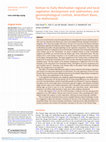
Netherlands Journal of Geosciences, 2022
Two new records from the Amersfoort glacial basin are investigated by means of pollen analysis. T... more Two new records from the Amersfoort glacial basin are investigated by means of pollen analysis. The cores are situated in the deeper part, close to the original Eemian stratotype Amersfoort 1 (Zagwijn, 1961) and at the margin of the basin. The aim is to reconstruct the Eemian and Early Weichselian vegetation development and to explore the impact of accommodation space, influx of allochthonous pollen and geomorphology on the vegetation composition. The results of the Amersfoort Basin are compared to the current Eemian stratotype in the Amsterdam Basin and other Eemian sites in the Netherlands. An almost complete Eemian to Early Weichselian sequence (E2-EWII) was retrieved from the deeper part of the Amersfoort basin. The late Saalian (LS) to early Eemian transition is not recorded in the Amersfoort basin, in contrast to the deeper Amsterdam Basin. The basin marginal core Den Treek reveals a condensed late Eemian (E5-6) and Early Weichselian (EW I-II) succession showing the importance...
searchmesh.com
Page 1. www.searchmesh.net Title: Worked example - Marine-Landscape Map of the Dutch Continental ... more Page 1. www.searchmesh.net Title: Worked example - Marine-Landscape Map of the Dutch Continental Shelf Author(s): Pieter Doornenbal, Jeroen Schokker, Denise Maljers, Jan Tjalling van der Wal & Sytze van Heteren TNO Built Environment and Geosciences Document owner: Sytze van Heteren (sytze.vanheteren@tno.nl) File name: GMHM4_WE_TNO_Marine_Lands cape_map_DCS.pdf Language: English Number of pages: 16 Summary: A ...
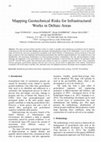
This paper presents method and first results of a study to quantify and communicate geotechnical ... more This paper presents method and first results of a study to quantify and communicate geotechnical risk for highway construction on soft soil and large building pits associated with infrastructural works in the Netherlands. A set of easy-to-read maps will inform the end users, geotechnical consultants at the Dutch Ministry of Infrastructure and Environment, in the early stage of projects of the most important subsoil-related geotechnical risks and their spatial distribution. The method involves risk identification, risk assessment, identification of critical geological features contributing to this risk, and development of maps reflecting the magnitude of the geotechnical risk. Geological information is derived from the detailed 3D geological model GeoTOP. GeoTOP allows quick data assessment and creation of maps on a regional to nationwide scale. Close cooperation between geologists, geotechnical engineers and end users is the key success factor in application of the method. Geotechni...

In a geological GIS-data recombination project, a digital map was produced that contains informat... more In a geological GIS-data recombination project, a digital map was produced that contains information on the Netherlands’ former coastal and delta plain landscapes over the last 14,000 years: the Holocene and the very end of the Pleistocene. The polygon map product is accompanied by a set of palaeoDEMs (Digital Elevation Models) indicating the attention depth for buried land surfaces and aquatic deposits for four time slices. This paper provides conceptual background information on the legend and construction principles behind the polygon maps and the palaeoDEMs, i.e. the decisions taken during the making of. It also provides a basic overview of the map product: landscape structure, burial depth and preservation, visualised for the four time slices in the RCE’s Archaeology Knowledge Kit. The text links coastal plain buried landscape mapping for four time slices to the other Knowledge Kit activities described in this volume, notably that of the Archaeological Landscapes map (for the m...

Netherlands Journal of Geosciences - Geologie en Mijnbouw, 2010
The original distribution pattern of Middle-Palaeolithic artefacts may be affected by tectonic mo... more The original distribution pattern of Middle-Palaeolithic artefacts may be affected by tectonic movement, sedimentation and periglacial processes. This is e.g. the case in the coversand area of Limburg and Eastern Brabant (NL), where the occurrence of numerous finds in a SW-NE trending zone across the Roer Valley Graben is considered enigmatic. In order to elucidate the processes affecting the spatial distribution and the chance of recovery of such artefacts, we investigated a site in Nederweert. At this site, several Middle-Palaeolithic artefacts had been recovered earlier from unexpectedly shallow depths. A test pit profile and grain size analyses revealed that the shallow sediments at this site have been affected by intense, multi-phase cryoturbation, which has deformed the sand and loam layers and partially mixed them thoroughly. As a result, optically stimulated luminescence dating of these sediments yielded widely scattered single-aliquot equivalent dose distributions. Using a ...
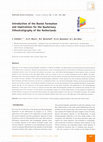
Netherlands Journal of Geosciences, 2007
Application of the traditional lithostratigraphic framework to subdivide the Middle- and Upper-Qu... more Application of the traditional lithostratigraphic framework to subdivide the Middle- and Upper-Quaternary locally-derived fine-grained deposits in the Netherlands is problematic. Deposits of many formations cannot be distinguished from each other based on lithological characteristics and stratigraphie position alone. To overcome this problem, we present a new, well-defined lithostratigraphy for these deposits, based on detailed research in the central part of the Roer Valley Graben. This area contains an up to 35 m-thick sedimentary record of Middle- and Upper-Quaternary sand, loam and peat deposits. These have mainly been formed by aeolian and small-scale fluvial processes and have been preserved as a result of tectonic subsidence. The traditional lithostratigraphic subdivision of these deposits into three formations (Eindhoven Formation, Asten Formation and Twente Formation) was based on a combination of litho-, bio- and chronostratigraphic evidence and the presumed widespread pre...
Netherlands Journal of Geosciences, 2012
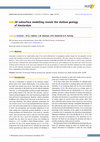
Netherlands Journal of Geosciences, 2015
Amsterdam is situated on the coastal-deltaic plain of the western Netherlands. Its geographical p... more Amsterdam is situated on the coastal-deltaic plain of the western Netherlands. Its geographical position brought the city prosperity, but also created huge challenges associated with heterogeneous and often adverse ground conditions. This paper explores the geology of Amsterdam to a depth of c. 100 m, based on the output of the 3D geological subsurface models DGM and GeoTOP. The model results are used to create a geological map of the area, to determine the extent and depth of the foundation levels that are in use for buildings in the city centre and to detect the source of filling sand on which part of the more recent expansion of the city was founded. It is shown that subsurface conditions have had a profound effect on both landscape development and historical city growth. Geomodels like DGM and GeoTOP provide an easily accessible way to obtain a better understanding of the shallow subsurface.
QUATERNARY STRATIGRAPHY AND PALEONTOLOGY OF THE SOUTHERN RUSSIA: connections between Europe, Africa and Asia, Jun 21, 2010
The shallow subsurface of the North-Western Netherlands is characterised by up to 10 m thick sequ... more The shallow subsurface of the North-Western Netherlands is characterised by up to 10 m thick sequences of Early to Middle Weichselian, fine-grained, organic-rich deposits. These sequences are part of the complex infill of a wide palaeovalley that was created during the retreat of the Saalian ice sheet (Late MIS 6), submerged during the Eemian marine highstand (MIS 5e) and in use by the river Rhine until the Middle Weichselian (MIS 5d-3). This study aims to characterise and map the sedimentary facies in the upper part of the ...

Netherlands Journal of Geosciences, 2013
Over the last ten to twenty years, geological surveys all over the world have been entangled in a... more Over the last ten to twenty years, geological surveys all over the world have been entangled in a process of digitisation. Their paper archives, built over many decades, have largely been replaced by electronic databases. The systematic production of geological map sheets is being replaced by 3D subsurface modelling, the results of which are distributed electronically. In the Netherlands, this transition is both being accelerated and concluded by a new law that will govern management and utilisation of subsurface information. Under this law, the Geological Survey of the Netherlands has been commissioned to build a key register for the subsurface: a single national database for subsurface data and information, which Dutch government bodies are obliged to use when making policies or decisions that pertain to, or can be affected by the subsurface. This requires the Survey to rethink and redesign a substantial part of its operation: from data acquisition and interpretation to delivery. ...

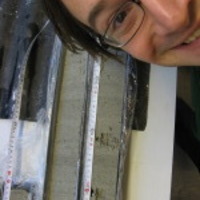




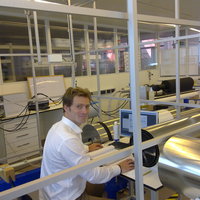

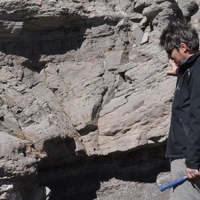
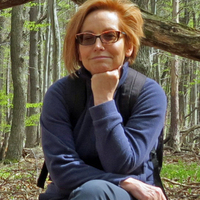
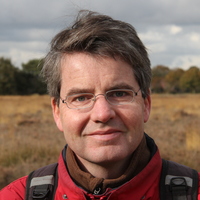
Uploads
Papers by Jeroen Schokker
Besides the direct application in the regional MIPWA groundwater model, the construction of the till model has resulted in several geologically relevant observations. This presentation discusses new insights regarding the geometry and heterogeneity of the Saalian glacial till. We show the exceptional variation in till depth and thickness over very short distances that was mapped in 3D for the first time at a regional scale, including the directionality present in the till geometry. Also, lithological variation of the till can now be studied over a range of local to regional scales. Furthermore, model construction has led to the spatial mapping of a second, older Saalian till in the south-east of Drenthe.
Relatively simple calculations on vertical voxel stacks in the model result in 2D raster maps, of which the design and information can be easily adapted to the user’s needs. The method is demonstrated using two examples: (1) a risk map for highway construction on soft soil linked to the risk of exceptionally slow consolidation. In this example, the geological information in the 3D model is translated to six risk categories displayed in a 2D map.; (2) a generalized soil composition map used by municipalities in estimating maintenance costs of their subsurface sewage-network. For this map the vertical succession of lithological classes in the upper 8 m of GeoTOP is summarized into five different map classes.
The maps from both examples show how smart selections and combinations of stratigraphy and lithological classes up to a chosen depth result in maps that are tailor-made to the user requirements. When needed additional maps can be created relatively easy, bringing geological information one step closer to the user’s own area of expertise.
In the near future we will incorporate more parameters in GeoTOP, making the model suitable for other applications. For the long term perspective we envision to create more flexible models; incorporating time (4D) and scaling. These models allow for, for example, detailed maps in urban areas and the creation of maps for a certain time period. With these perspectives the amount of information in the models increases rapidly, making tailor-made dissemination even more important.
The first stop on Saturday will be at the beach near the village of Camperduin. The present-day coastal sedimentary environment is well developed here. Subsequent stops will be more inland, to view the imprint of a sub-recent back-barrier inlet system on the present-day morphology. The shallow subsurface will be revealed using lacquer peels and shallow drillings. The remainder of the route to Bad Bentheim (Germany) will provide a cross section of several Quaternary depositional environments in the Netherlands, aided by the results of shallow geophysical techniques.
On Sunday the focus is on the Lower Cretaceous Bentheimer sandstone analogue. Outcrops in four quarries will show facies and thickness changes over relatively short distances. These are essential parameters for efficient development of an oil or gas field and for the development of geothermal doublets. The final stop will be at the location of the redeveloped Schoonebeek oilfield. On the way we will pass through the German part, the Emlichheim oilfield development. The new development strategy of NAM will be explained with reference to the subsurface model.
karakterisering. Naast een verdeling van de geotopgebieden in lithostratigrafische formaties (formatieniveau) zijn de beschikbare waarnemingen verder onderverdeeld in lithologieklassen. In dit rapport wordt gekeken naar de representativiteit en geschiktheid van de beschikbare informatie, en op welk niveau het gewenste onderscheid in reactiecapaciteit het best gemaakt kan worden.